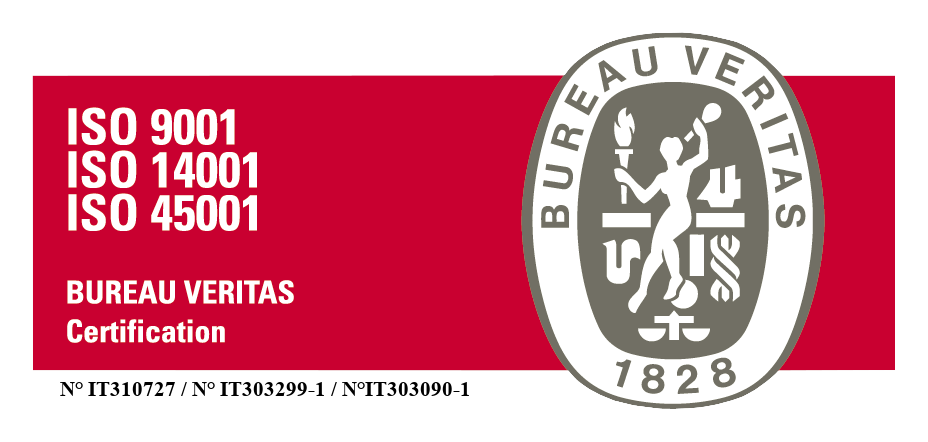With the entry into force of Legislative Decree No. 219 of 24 April 2006, hospital gases are considered medicinal products for all purposes. Therefore, the protection procedures foreseen with regard to their production, marketing and control must be carried out.
Gases used for therapeutic purposes distributed in the hospital through centralised distribution systems and which have a monograph in the Official Pharmacopoeia are the following:
From what has been said above, it can be deduced that medicinal air is the only gas that can be produced on site, in two different ways, and for this reason the production of the same is configured as "Galenic Officinale" prepared at the hospital, under the responsibility of the pharmacist.
Needless to say, the hospital pharmacist is responsible for both the continuity of the supply of medicinal gas and the quality of the drug delivered to the patient and therefore to the point of use (medicinal gas outlet).
In order to correctly respond to the responsibilities referred to in the legislation, the pharmacist must activate those control procedures, drawing up a monitoring protocol according to the F.U. in order to collect, in a systematic and organised manner, data on the quality of the medicinal gases supplied.
It is also useful to remember that with the definitive entry into force from 21/03/2012 of the Community Directive 2007/47/EC, the definition of medical device has changed and the facility used for the storage and distribution of medicinal gases is configured as such.
The checks carried out to monitor the chemical physical quality characteristics of medicinal gases can also be used to check the proper functioning of the medical device used for transporting medicines.

Control systems:
In order to carry out quality controls on medicinal gases, the Official Pharmacopoeia provides for two separate analysis procedures. The first involves the use of dedicated instruments (analysers), which, depending on the parameters to be determined, apply different principles of analysis. In particular, the tables below show the parameters to be checked and the analytical methods to be applied by the analysers for the most commonly used medicinal gases.
| Analyte | Method | Limit |
|---|---|---|
| Oxygen | Paramagnetic | 21,0 - 22,5 % v/v |
| Water | Electrolytic hygrometer | < 67 ppm v/v |
| Analyte | Method | Limit |
|---|---|---|
| Water | Electrolytic hygrometer | < 67 ppm v/v |
| Carbon dioxide | Infrared | < 5 ppm v/v |
| Carbon dioxide | Infrared | < 500 ppm v/v |
| Sulphur dioxide | Fluorescence U.V. | < 1 ppm v/v |
| Nitrogen oxides | Chemiluminescence | < 2 ppm v/v |
| Mineral oils | Gas chromatography | < 0,1 mg/m3 |
| Oxygen | Paramagnetic | 20,4 – 21,4 % v/v |
| Analyte | Method | Limit |
|---|---|---|
| Oxygen | Infrared | > 98 % v/v |
| Water | Igrometro Elettrolitico | < 67 ppm v/v |
| Carbon dioxide | GC - FID + Methanator | < 5 ppm v/v |
| Carbon dioxide | GC - TCD | < 300 ppm v/v |
| Nitrogen oxides | Chemiluminescence | < 2 ppm v/v |
| Analyte | Method | Limit |
|---|---|---|
| Oxygen | Paramagnetic | > 99,5 % v/v |
| Water | Hygrometer | < 67 ppm v/v |
| Carbon dioxide | Infrared | < 5 ppm v/v |
| Carbon dioxide | Infrared | < 300 ppm v/v |
The instrumental methods described can be accredited, i.e. for each of them a series of measures can be implemented to ensure quality control. This allows results to be expressed through their application with controlled constant precision and accuracy.
In addition to the instrumental methods described above, the Pharmacopoeia also provides "Test Methods" for medicinal gas controls, which are mainly used for screening purposes and are carried out using colorimetric vials. These methods cannot be accredited as they are not characterised by elements that can be monitored with a high level of accuracy.
Regarding the two different types of methods that can be used for the quality control of medicinal gases, we can say that instrumental methods are suitable for the quality certification phases of medicinal gases applied on an annual or semi-annual basis, by the hospital pharmacist.
Control procedures using colorimetric vials can be applied more frequently to provide an indication of the level of reliability of gas quality
In the context of this important activity of control and certification of the quality of medicinal gases, Centro Assistenza Ecologica S.r.l., a laboratory accredited by ACCREDIA, offers important support services to hospitals and pharmacists in charge.
The services offered are structured as described in the following points:
Bearing in mind that the distribution system is configured as a medical device and that Annex G of the UNI EN ISO 7396 standard identifies a series of responsible figures for each of which it establishes precise tasks, our organisation is able to support the organisation of the hospital structure in order to assist it in implementing the necessary procedures for identifying the figures envisaged by the standard. After the implementation of the management system, our organisation is also able to provide the services of education and training to the people in charge of carrying out roles in the context of the system itself.
Laws, Regulations, Guidelines, Reference Studies

Via Caduti del Lavoro, 24/I 60131 Ancona